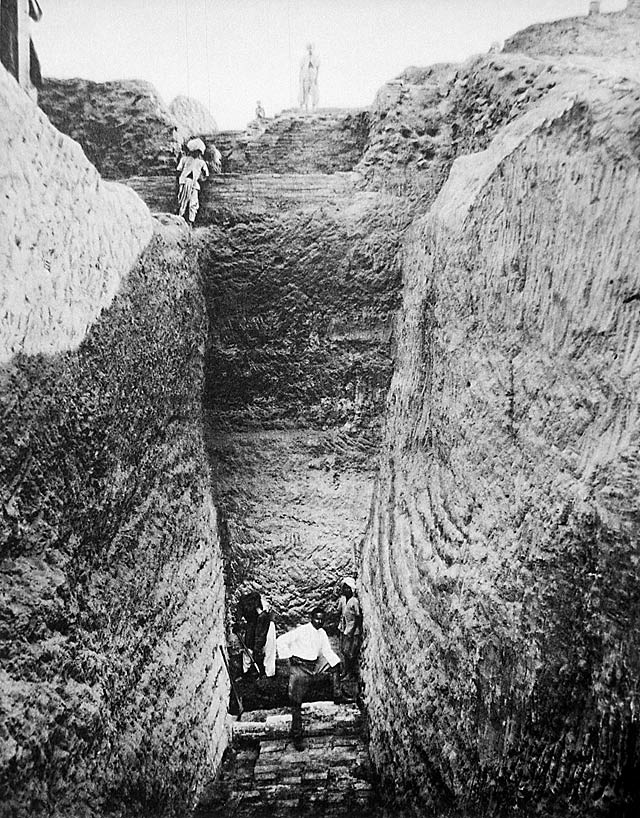
Deep cutting near north-west corner of monastery, showing pavement of seventh stratum in Mohenjo-daro, 1920s.
Having toured the ruins of the Egyptian civilization in Cairo, Mayan in Guatemala/Mexico, Inca in Peru, what intrigues me about the Indus Valley civilization is that it was prosperous, peace loving AND egalitarian. I don't believe there is other precidence of these elements in unison being maintained over millenia. Clearly this is something worth researching to find clues of how to create sustainability in today's world.
I have not come across scholarship yet that explains what sort of governance and social structure nurtured these three elements in unison in the Indus Valley. As a current day avid practitioner of yoga, I have a hunch that it has to do with their pre-vedic yogic practices in which both at an individual and collective level, the people were engaging in the balance of mind, body and soul, without discriminatory socio-economic stratification tainting the experience. Keeping the "flight and fight" response in check through yoga at an individual and collective level, was possibly an essential ingredient of this society. I would be keen on hearing the experts talk about how egalitarianism and peace was nurtured amongst the people of the Indus Valley over millenia. Submitted by Bilal Musharraf
Jane McIntosh
It is possible that the egalitarianism of the Indus civilization is something of an illusion. Funerary practices often give good evidence of social hierarchy but the number of Indus burials is extremely limited, so the picture is incomplete. Similarly, in the cities, where social differences might be reflected in differences in the size and wealth of houses, the areas that have been excavated may be untypical. Nevertheless, the existing evidence indeed gives an impression that the Indus civilization was relatively egalitarian: for example, good quality products seem to have reached even villages, town and city houses are not markedly different in size and wealth, the benefits of sanitation and water seem to have been available to the whole urban population, there are no obvious palaces, and so on.
In the light of Indian religion, it seems reasonable to suggest that in the Indus civilization social status was not marked by degrees of wealth and comfort but by degrees of ritual purity. Yoga may well have been involved, given that some seals show a figure in what seems to be a yogic pose.
Nevertheless, there must have been a social and political hierarchy in order for the state to function: the widespread distribution of goods and materials, the degree of specialization and organisation in craft production, the massive architectural achievements (eg the 7-metre-high platform underlying the Mohenjo-daro citadel) all imply a very considerable bureaucracy and a management hierarchy. Religion may have been instrumental in ensuring that people played their part and accepted their lot in life.
The enormous natural wealth and resources of the Indus basin must have been important in promoting peace within the Indus civilization: where there was no pressure on resources and all needs were apparently supplied, there was no spur to conflict. Conversely the supply of goods and materials from other parts of the Indus realm put a premium on continuing harmonious cooperation and preserving the status quo.
Similarly the Harappans' mutually beneficial relations with neighbouring cultures, such as the people of the Aravallis would have promoted cooperation and discouraged conflict. No other civilization was within military reach of the Indus, so there was no possibility of conquest of or by the Harappans.
